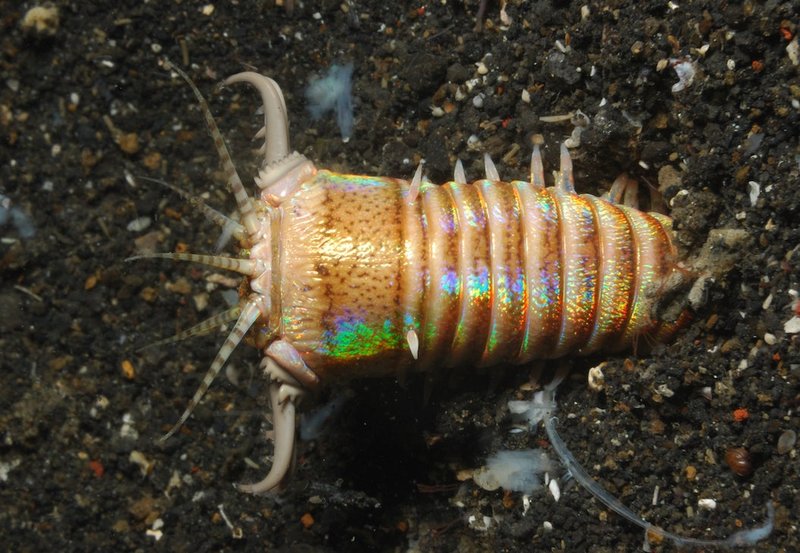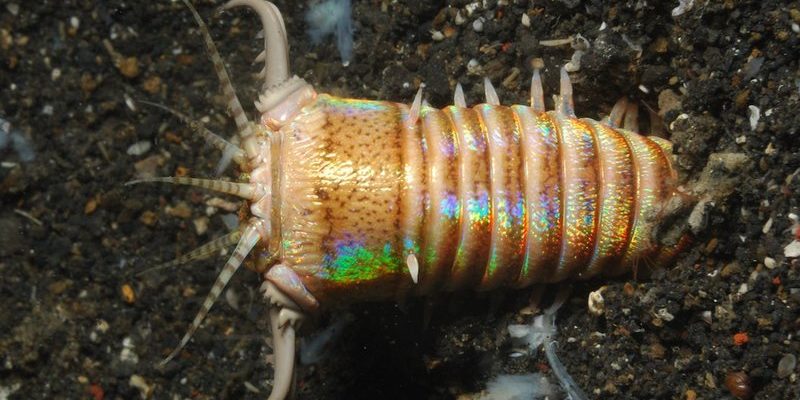
Bobbit worms, also known as *Eunice aphroditois*, are surprisingly fascinating despite their nightmarish nickname. They can grow up to 10 feet long and can be found in various warm waters around the globe, particularly in coral reefs. These worms, named after the infamous case of John Wayne Bobbitt, have quite the hunting arsenal. The way they capture prey will make you think twice before venturing into their territory. So, grab your coffee, and let’s explore what makes Bobbit worms so peculiar and terrifying!
What Exactly Are Bobbit Worms?
Bobbit worms belong to a group of marine polychaete worms. They are not true worms in the traditional sense, but rather a type of segmented worm best known for their long, slender shapes. They have a striking appearance with bright colors, often green or purple, which can lead one to think they’re harmless. However, that’s where the surprise lies.
These worms are typically buried in sand or mud, with only their heads peeking out. Their specialized antennas can detect vibrations in the water, signaling potential food. Imagine sitting quietly in your favorite café, welcoming the aroma of coffee, then suddenly having a gourmet dish appear on your table—this is how Bobby worms experience their meal preparations.
When prey like fish, crustaceans, or even smaller worms approach, these stealthy creatures spring into action. They can rapidly extend up to a meter to grab their unsuspecting dinner with powerful jaws. It’s like watching a magician perform a trick right in front of you—only this trick ends with the unfortunate prey being snatched away.
The Hunting Technique of the Bobbit Worm
You might be wondering, what makes Bobbit worms such efficient hunters? Well, let me explain. Their hunting techniques are what really set them apart from other reef dwellers. When prey comes close enough, the worm lashes out with striking speed, thanks to its well-developed muscle structure.
1. Ambush Predator: Bobbit worms are traditional ambush predators. They lie in wait, blending into their environment, making it difficult for prey to spot them. It’s an effective strategy that uses both patience and stealth.
2. Powerful Mandibles: Their jaws are equipped with sharp, serrated edges, allowing them to grab and hold on tight. Once they catch something, it’s nearly impossible for the prey to escape. Think of it as having a well-designed trap that ensnares its target instantly.
3. Speed: Researchers note that these worms can strike with lightning speed. This quick reflex is crucial for catching agile fish and crustaceans. Honestly, it almost feels like watching a nature documentary where the predator always wins.
This combination of patience, powerful jaws, and speed makes Bobbit worms some of the most effective hunters on the reef, earning them the nickname “nightmare.”
Where Do Bobbit Worms Live?
Bobbit worms thrive in warm marine environments, particularly in the tropical and subtropical waters of the Indian and Pacific Oceans. They often inhabit coral reefs, where their color patterns can camouflage them effectively among rocks and sand. But let’s break down where you might encounter these intriguing creatures.
– Coral Reefs: These vibrant ecosystems provide the perfect backdrop for Bobbit worms. They can blend into their surroundings, making it tough for both predators and prey to spot them.
– Sand and Mud: You’ll often find Bobbit worms burrowed in the sandy or muddy ocean floor. Their tendency to stay hidden is part of why they are so feared—they can surprise you when you least expect it.
– Depths: While some can be found in shallow waters, others prefer deeper regions, ranging from 10 to 200 meters below the surface. This variety of habitats contributes to their mystique and adaptability.
Understanding their habitat can help deepen your appreciation of these fascinating yet fearsome creatures. As you dive into the ocean depths, remember that a Bobbit worm could be watching from its hidden lair.
The Role of Bobbit Worms in the Ecosystem
Bobbit worms might sound like the villain in a marine movie, but they play an essential role in their ecosystem. Here’s how they fit into the intricate web of ocean life:
– Predator and Prey Dynamics: As effective hunters, they help control populations of smaller fish and invertebrates. This balance is crucial for maintaining a healthy ecosystem. Without them, we could see an overpopulation of these prey animals, leading to competition for resources.
– Nutrient Recycling: Bobbit worms contribute to nutrient cycling in the ocean. When they consume prey, they break it down, which can aid in the decomposition process and provide nutrients back to the environment. It’s nature’s way of keeping everything in balance.
– Biodiversity: While they may be terrifying to some, Bobbit worms add to the biodiversity of the reef. The more diverse the ecosystem, the healthier it is overall, leading to stronger coral reefs and thriving marine life.
So, while they may send shivers down your spine, Bobbit worms are part of a delicate balance that keeps our oceans flourishing.
How to Spot a Bobbit Worm
Alright, here’s the fun part! If you ever find yourself snorkeling or diving in waters known for Bobbit worms, knowing how to spot one can be quite the adventure.
1. Look for the Antennas: One of the most identifiable features of Bobbit worms is their long, feathery antennae sticking out from a burrow. If you see these, it’s a good indicator that a Bobbit worm is nearby.
2. Watch for Movement: If you notice a quick flash of color or a sudden movement in the sand, it might be a Bobbit worm striking. Keep your eyes peeled for any unexpected shifts in the ocean floor.
3. Use Caution: Remember, while spotting one can be exciting, it’s crucial to observe from a distance. These worms can be aggressive if threatened, so it’s best to admire them without interference.
Being aware of these signs not only keeps your adventure safe but also enriches your encounter with the marine world.
Bobbit Worms in Popular Culture
The unique name “Bobbit worm” is likely tied to more than just marine biology; it has also made its way into popular culture. You might recall the infamous John Wayne Bobbitt case, and it’s no surprise that the worms’ name is a play on this dramatic history. The blend of pop culture with marine life serves as a reminder of how intertwined our worlds can be.
In movies and documentaries, Bobbit worms are often depicted as the ultimate underwater predator. They capture the imagination with their striking appearance and fearsome hunting techniques, making them a favorite among marine enthusiasts and documentarians.
This cultural reference helps spark interest in ocean life, reminding us that while these creatures may be intimidating, they also serve as a crucial part of our global ecosystem. So, when you hear someone mention Bobbit worms, you can nod knowingly with a blend of humor and respect.
Final Thoughts on the Bobbit Worm
In summary, Bobbit worms certainly deserve their title as the nightmare of the reef. Their stealthy hunting tactics, vibrant appearances, and critical role in the ecosystem make them a unique blend of beauty and terror. While they might send chills down your spine, they also inspire awe in anyone lucky enough to encounter them.
Next time you think about the ocean’s depths, remember that it’s full of surprises—some delightful, some daunting. Embrace the complexity of marine life, and don’t shy away from the wonders it holds. Whether you’re an ocean explorer or just curious about the creatures that dwell beneath the waves, the Bobbit worm serves as a perfect reminder of nature’s extraordinary artistry and power.

